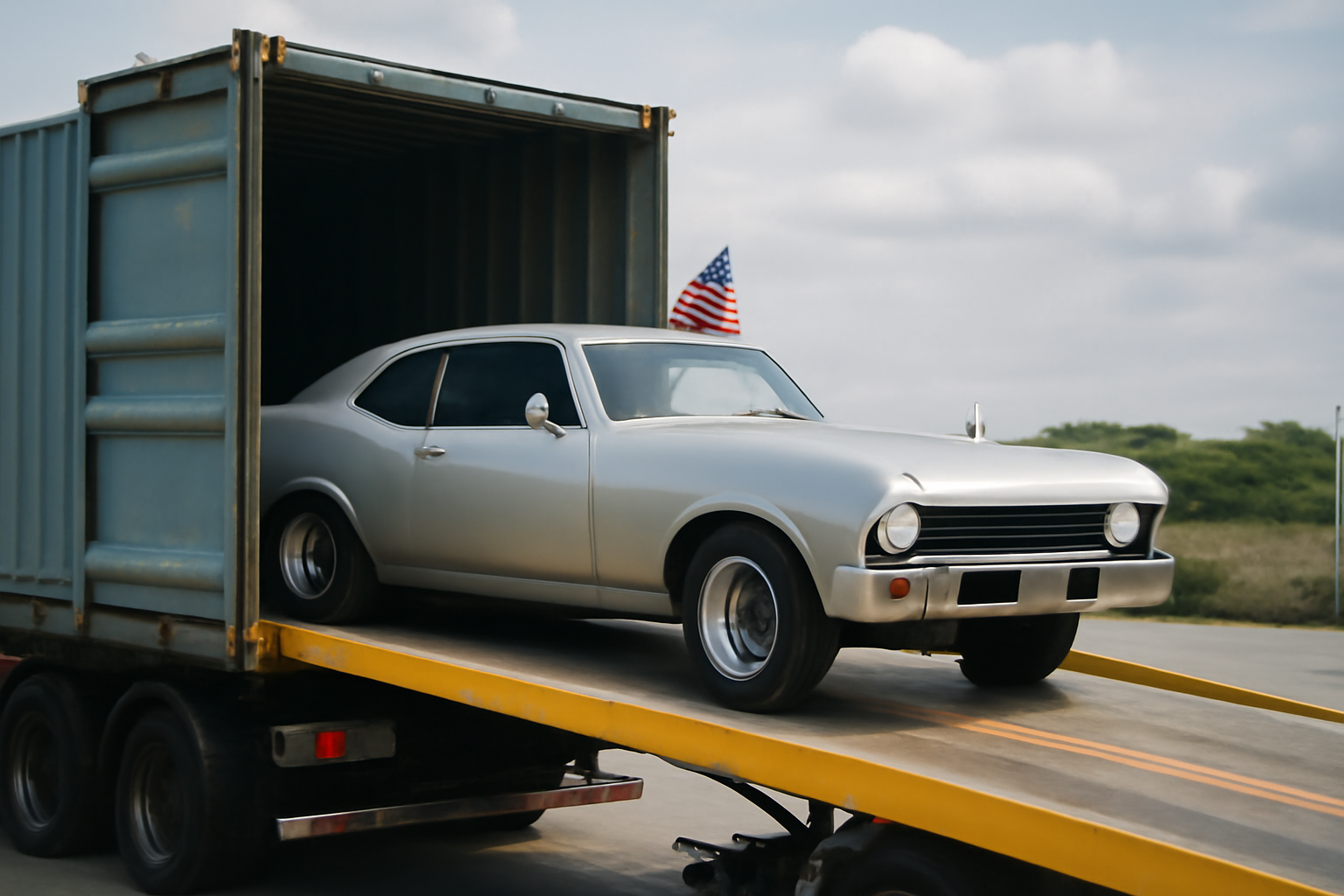Importing a car from the USA to Australia can seem like a thrilling adventure, but are you prepared for the hidden costs that come with it? In this guide, we break down the true expenses involved, beyond just the purchase price. If you want to avoid surprises and budget wisely, keep reading, these expert tips will help you import confidently and safely.
Understanding the Full Cost Picture
When importing a vehicle, don’t just focus on the sticker price. You also need to factor in shipping, duties, compliance modifications, taxes, and more. Begin with a clear budget that covers the initial purchase, but be ready for extra expenses. Insurance during transit, quarantine cleaning, and local conversion costs can significantly impact the bottom line.
Shipping Costs: RoRo vs. Container, What’s the Real Difference?
One of your first decisions is whether to opt for Roll-on/Roll-off (RoRo) shipping or container shipping:
- RoRo shipping tends to be cheaper, ranging roughly from USD 1,200 to 2,500, because it involves driving the car onto and off the ship, with less handling.
- Container shipping, while more expensive (typically USD 2,500 to 4,500), offers better protection; your car is enclosed and may even be shipped alongside your personal effects.
Don’t forget to include marine insurance, often around 1–2 % of the vehicle’s declared value, to guard against damage or loss in transit.
Once the car arrives at an Australian port (Sydney, Melbourne, or Brisbane), additional quarantine cleaning fees may apply to remove soil, plants, or insects. This step is mandatory under Australian biosecurity laws.
Import Duties and Taxes: How Much Will You Pay?
Upon arrival, Australia imposes taxes that significantly affect the total cost:
- Import duty: Usually 5 % of the car’s purchase price (including shipping and insurance).
- Goods and Services Tax (GST): 10 % on the total, car value, shipping, insurance, and duty.
- Luxury Car Tax (LCT): If the car’s value exceeds the LCT threshold (about AUD 90,000), you’ll be charged 33 % on the amount above that threshold.
It's essential to use accurate valuation, with services like customs valuation calculators, to estimate these amounts correctly.
Compliance & Conversion: Adjusting to Australian Standards
After clearing customs, the car must comply with Australian Design Rules (ADRs). This often means:
- Modifying headlights and indicators.
- Adjusting seat belts, bumpers, and safety features.
- Possibly converting from left‑hand drive (LHD) to right‑hand drive (RHD), required in many states, especially for newer vehicles.
Compliance costs can range from AUD 5,000 to 15,000 or more depending on vehicle complexity. Add registration and inspection fees on top of that.
Agent vs. DIY: Choosing the Right Route
Hiring an import agent or broker can simplify the process. These professionals handle:
- Import permit applications through the ROVER portal.
- Shipping logistics.
- Quarantine clearance.
- ADR compliance liaison.
- State-level registration arrangements.
Working with a trusted car shipping company in Australia can help you avoid costly mistakes and streamline the entire process.
Expect to pay AUD 3,000 to 6,000 for a full-service agent, but they can save you headaches. If you're confident navigating customs, logistics, and compliance yourself, a DIY route may save money, but it also raises the stakes if something goes wrong.
Example Cost Breakdown: A 2022 Ford Mustang GT
Note: This is illustrative. Your final total depends on purchase price, shipping method, vehicle type, and service levels.
Tips to Keep Costs in Check
- Use online cost estimators to preview duties and taxes.
- Compare RoRo vs. container quotes, sometimes the extra safety is worth the price.
- Confirm up-to-date ROVER regulations before purchase.
- Request detailed quotes from multiple compliance converters.
- Ask potential agents for break-downs: shipping, quarantine, customs, compliance, registration.
- Factor in currency fluctuations, USD to AUD can shift rapidly.
Bottom Line
Importing a car from the USA to Australia is about far more than just buying a vehicle, it’s a series of calculated steps that include shipping, taxes, compliance, and paperwork. With transparent pricing and careful planning, it can still be a savvy way to get that dream model, but only if you budget wisely and understand all the moving parts.


































